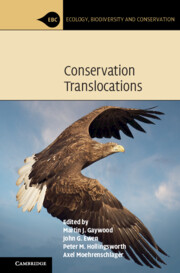The distribution of the Critically Endangered tree Manglietia longipedunculata, of which there are only 11 known wild individuals, is restricted to the Nankunshan Nature Reserve in South China. The species is threatened with extinction because of its small number of individuals and the impediments to its reproduction (a combination of protogyny, a short period of stigma receptivity, and a lack of efficient pollinators). To reduce the risk of extinction we conducted two conservation translocation trials: one to augment the sole extant population, and the other 202 km north of the current range. The latter trial was a conservation introduction in which the goals were to increase the population and to buffer against the effects of climate change. We used emerged and grafted seedlings as translocation materials. We compared the survival, growth, and eco-physiological properties of emerged and grafted seedlings at the two sites. The survival rate and growth were higher for grafted seedlings than for emerged seedlings at both sites. Eco-physiological data indicated that grafted seedlings at both sites were as efficient or more so in light and water usage than wild individuals, whereas emerged seedlings were less efficient. Grafted seedlings attained the flowering stage sooner than emerged seedlings. Our study suggests that grafting can facilitate the augmentation and establishment of new populations of M. longipedunculata and perhaps of new populations of other threatened species facing reproductive difficulties and climate change.


